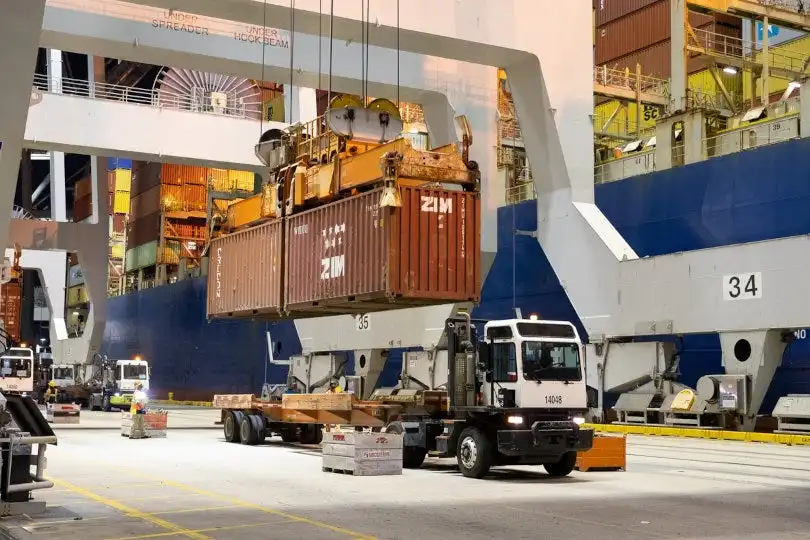
Fleet Management 101: What It Is and How to Implement It | Image source: rawpixel.com
The use of fleet management systems in transportation and trucking companies has grown dramatically worldwide. This fact arises for a number of reasons, one of which is the nation’s increasing trajectory of technological adoption.
This kind of solution covers the widest range of market sectors by allowing the option to assess the outcomes with various automobiles.
The potential users are therefore infinite.
Some managers immediately consider truck tracking when considering a fleet management system. However, employing technology offers much more advantages than just tracking the location of the vehicle itself.
Fleet management systems not only track but also have the potential to improve safety by managing risks and keeping an eye on driver conduct. It can be used to pinpoint areas where drivers and the fleet’s overall performance need to be improved.
Read also: The Future of Supply Chain: 5 Critical Changes to Make Today
What is a fleet management system?
Businesses utilize this kind of system to get data regarding their own logistical operations. As a result, it facilitates resource management in its entirety, with the goal of raising revenue and enhancing driver safety.
There are multiple technologies that can be used to develop the full monitoring system, including:
- Telemetry
- Video monitoring
- Fatigue sensor
- Driver journey control
How does a fleet management system work?
For professionals in administration and logistics who deal with the everyday issue of managing vehicle movement inside their enterprises, a fleet management system is a vital ally.
Though it uses a somewhat different programming style, this system functions similarly to business administration software in that it serves as a platform for managing each fleet vehicle individually.
Utilizing a fleet management system effectively requires knowledge about the technology and how to apply it. The tool’s data must be analyzed in order to create plans that maximize productivity, cut expenses, and enhance outcomes.
In this instance, tracking devices that are attached to the relevant vehicles power the fleet control system. These devices gather data and send it to an operations center, where it is analyzed and turned into insightful information that helps with decision-making.
But the possibilities extend beyond as simple as scheduling vehicle entry and departure times, creating routes, keeping an eye on travel expenses, tracking drivers’ movements, and other routine duties.
A wide range of features are available to monitor both individual productivity and collective team performance, offering data that has the potential to drive a company’s operational efficiency.
The main functions of a fleet management system
The key technologies found in an advanced fleet management system will be discussed next. Follow along!
Tracking
Every vehicle’s current location is given to the manager using the tracking feature. This makes it possible to control processes more precisely, which enhances both efficiency and safety.
Monitoring
Fleet vehicles are monitored, and managed, and data is gathered via vehicle monitoring. This enables the control of maintenance and other pertinent data in addition to monitoring the position, speed, direction, and condition of the vehicle.
Telemetry
Telemetry is the process of gathering data from a moving vehicle remotely. The information gathered includes but is not limited to, speed, fuel usage, and engine temperature.
Video monitoring and fatigue sensor
One other advancement in technology is video surveillance. In addition to capturing photos, it utilizes internal and external cameras along with artificial intelligence to identify unsafe driving behaviors including weariness and carelessness.
Warning noises are used to get drivers’ attention and alert them to the dangers of their conduct. These incidents are recorded, and managers have access to them via the platform.
Fleet management has many advantages, some of which are as follows:
- Reduction in fines and accidents;
- Utilizing photos to look into robberies, thefts, and accidents;
- Driving instruction to prevent unsafe conduct;
- Determining where driver behavior has to improve in order to better target instruction.
Provide automatic insights into the operation
The manager must also receive automatic information from a fleet management system. The application of artificial intelligence makes this feasible.
Development routes categorize an operation by levels: Critical, Improvement, Evolution, and Excellence, helping to identify the key issues of concern and set targets for action.
Data from fatigue sensors and telemetry is the foundation for accident prediction. The system offers a safety grade based on the complete behavioral history of the drivers. This gives you access to a single resource that lets you identify hazardous routes, fleet safety advancements, and the drivers and organizational units most at risk.
Artificial intelligence is used to produce insightful analysis for every operation as well as recommendations for the necessary steps to increase fleet productivity and safety.
How to interpret data from a fleet management system?
A strategic interpretation of the available data is necessary for the system to function properly.
How on earth is this feasible in real life? Check this out:
1. Keeping an eye on signs
Different types of information are provided by management systems. The manager is in charge of using it to determine which metrics are most crucial for their fleet and to regularly check on them in order to assess how well the operation is performing overall.
2. Action plan based on signs
Apart from keeping an eye on the available indicators, it’s crucial to utilize the offered data to strategize and organize measures that might enhance the outcomes of the operation. When making a strategic decision, it is necessary to consider data that can be monitored by the fleet management system, such as vehicle performance and driver behavior.
With the right fleet management system, your business will be more and more prepared to produce noteworthy outcomes. Speak with 3PL Links to maximize your fleet’s performance!


